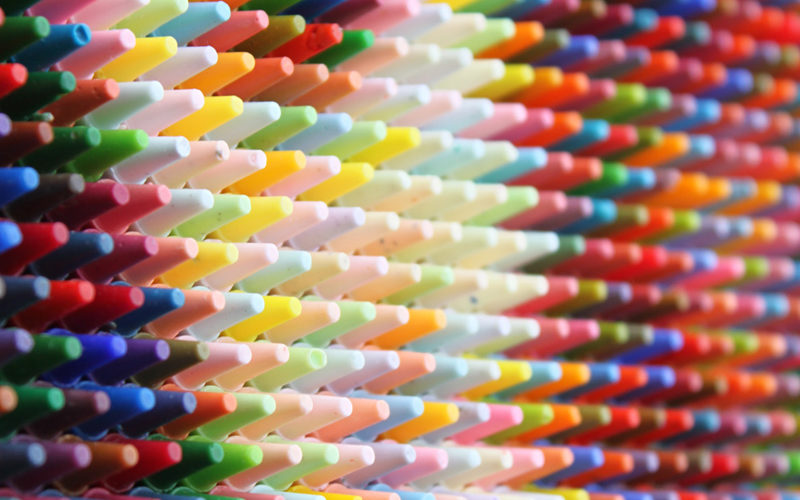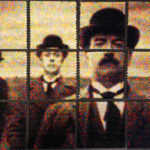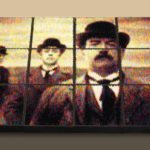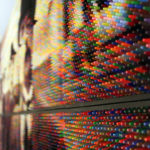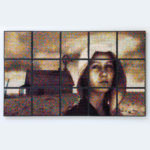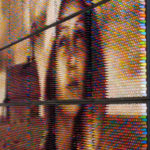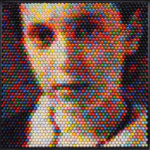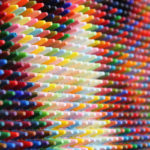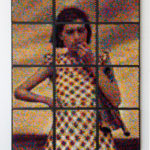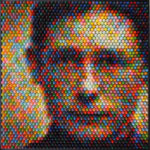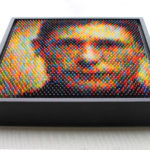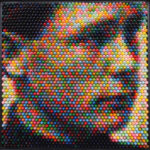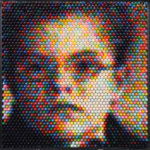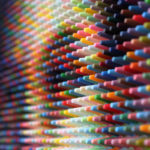Kim Foster Gallery
June 17 – July 17, 2010
Press Release
Kim Foster Gallery is pleased to present The Land Surveyors, Christian Faur’s first solo show in New York City. Using an intricate digital mapping technique, Faur deconstructs imagery down to pixels. This information is used to hand-cast crayons into precise tones and colors. Eventually, thousands of crayons are reassembled into wooden frames to produce an art form that balances both the qualities of photography and sculpture. From a distance, the pieces look like highly pixelated images. It is only when the viewer gets closer that they realize that the pixels are crayon tips.
Faur starts out with photographs taken during the Great Depression as a reference to our current economic and social crisis. Portraits of anonymous individuals in desolate, empty landscapes make up a gallery of the powerful and the powerless. Inspired by Franz Kafka’s novel The Castle where the protagonist seeks to find work as a land-surveyor but gets caught up in the system’s bureaucracy, the title of the show serves as a metaphor for the impenetrability of a political system, that enables greed and corruption and leaves the individual at the whim of those in power.
Faur then reconstructs these grey photographs with hundreds of differently colored crayons to give them back the lost color of their time. This idea is to be understood quite literally: although full color in film had been available in the 30’s, cost did not permit its use. The economic crisis had removed color not only metaphorically from everyday life experiences but also from the aesthetic possibilities of its times.
Faur is a Director of Collaborative Technologies for the Fine and Performing Arts at Denison University with an academic background in math and physics, which in many ways informs his art. Faur happened upon the use of crayons accidentally. He had been searching for a way of working with encaustics. Trying to make encaustics work within a photo realist style. Then on his daughter’s birthday, he bought her a large box of Crayola crayons, and when he opened the box, he saw all those wonderful tips reminding him of his own childhood and the slight pain of using each of those beautiful new crayons for the first time.
His unique crayon process suggests element from both high and low culture, from mass market products like Lite-Bright to Saurat’s technique of pointilism.
